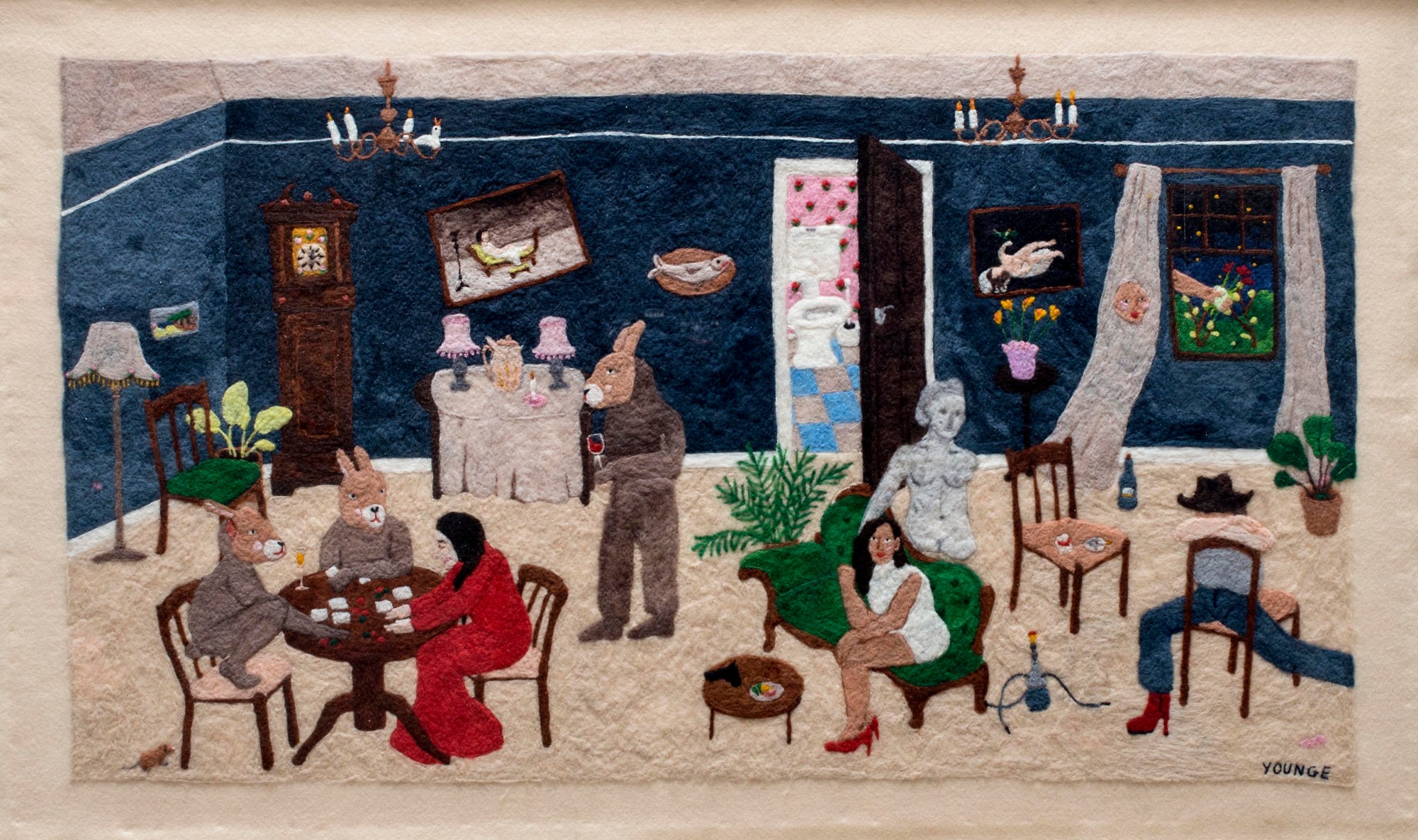A woman with a Maltese dog sits on a stool by a bar, next to a large man drinking a beer. It must be somewhere in South Africa judging by the decoration on the wall: a poster for Carling Black Label poster — the country’s most popular beer — and the skull of a small buck. Elsewhere, a monkey sits at a table with a candle burning; dinner for one. Behind it, a woman wearing a pig’s head is entranced, performing a frantic dance.
The above scene is one of the creations born out of Michaela Younge’s brilliantly absurdist brain. Since graduating from the Fine Art course at the University of Cape Town, the 26-year-old artist has been crafting large-scale wool tableaux, in which she explores dreamlike narratives. The scenes she meticulously pricks and sticks with merino wool are full of detail: walls decorated with intricate film posters and neon signs, floors tiled and rooms scattered with pot plants and half empty wine glasses. Her compositions feel like scenes from fever dreams — weaving together popular culture, urban legends and myths. A bit like a modern day update on Hieronymus Bosch.
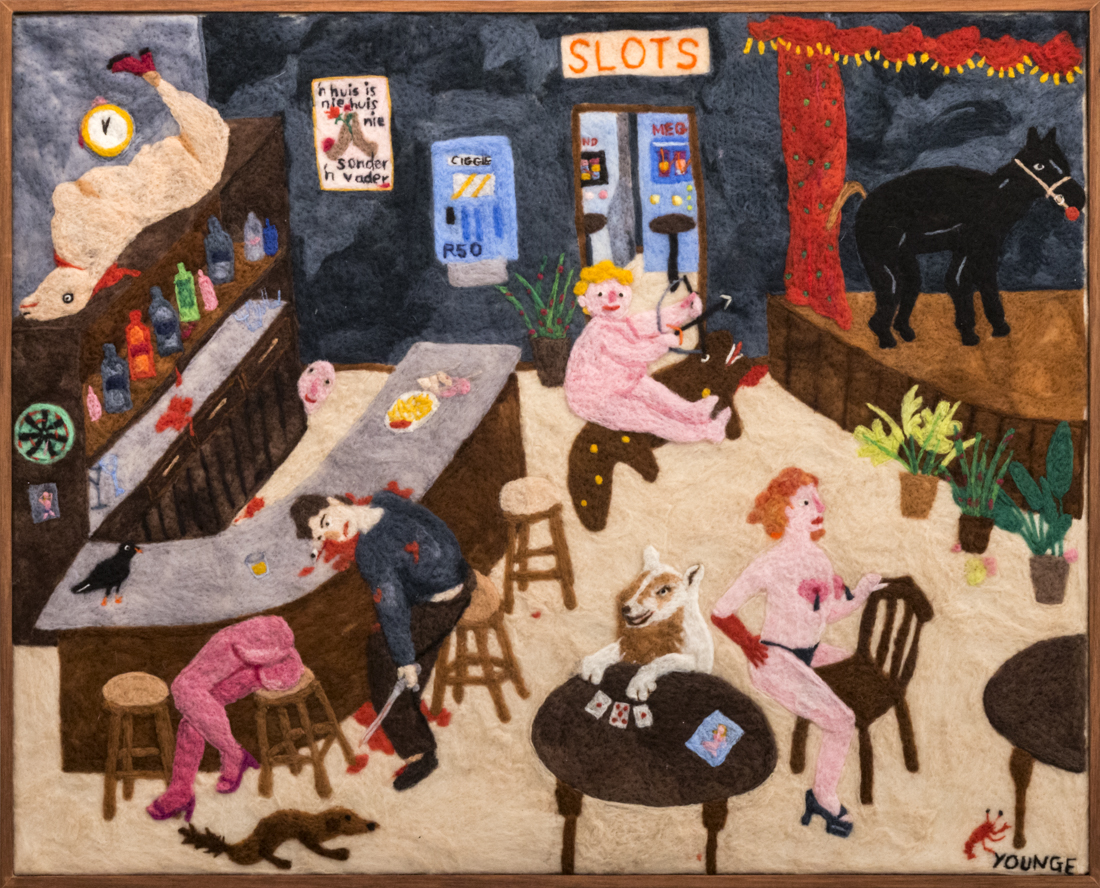
Born and raised in Cape Town, Michaela grew up in an artistic family — her father is renowned sculptor Gavin Younge and a former lecturer at UCT’s art department, where her mother works as well. The school’s campus was like an extension of her home. “As a child I’d spent a lot of time there,” she says. “After school my dad would set me to work with bits of wax and clay as he was finishing up his day. As far back as I can remember, I have been drawing and making things so it was almost inevitable that I would go study art.” She ended up studying at Michaelis, Cape Town’s school of fine art, where she did printmaking and sculpture. The felting and embroidery, however, only came about after she left the college.
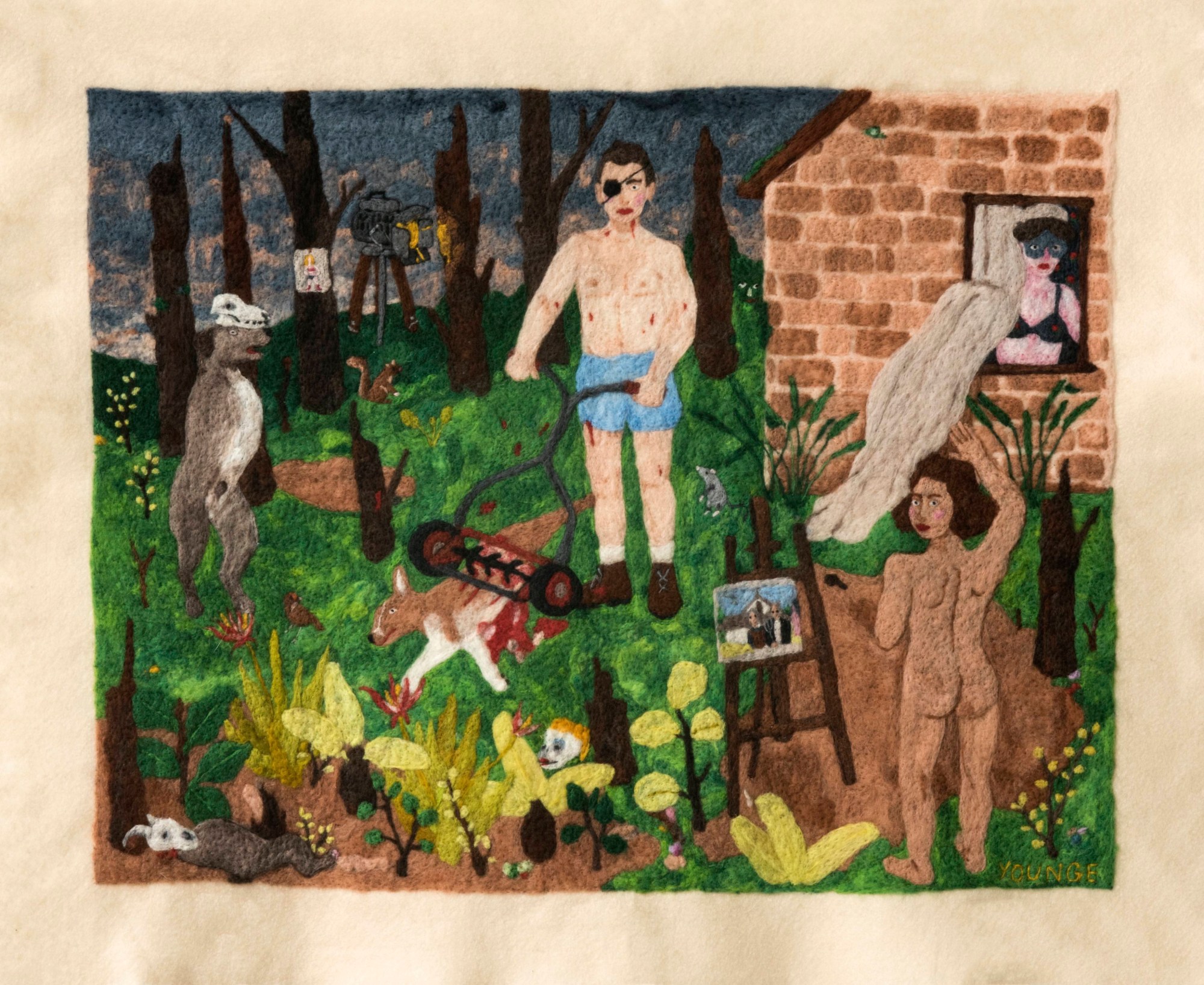
Growing up in Cape Town has had an impact on her work, she says. “South Africans have an inherent sense of humour, but there’s also violence within us,” she says. “I’m interested in how it infiltrates society. I don’t think it’s a new thing, we have always been violent. We hear about it daily, and in a sense we almost expect the worst.” But it’s not only the legacy of apartheid, the decades-long system of institutionalised racial segregation and discrimination that left South African society traumatised and divided, that contributes to that feeling. “Apartheid is part of our specific history, of course, but I see violence everywhere. We live in fucked-up world and are constantly on guard. I’m terrified of America because of serial killers, and school shootings, for example.”
It’s one of the reasons violence and death are recurring motifs in her tapestries. From butchered sheep, to predatory animals ripping their prey to shreds, to severed limbs and people bleeding profusely from knife wounds — the picture Michaela paints is pretty grim. But all that carnage is counterbalanced by humour and absurdity. Think a cupid riding an animal aiming arrows at a humanoid horse, or a man taking a piss against a tree.
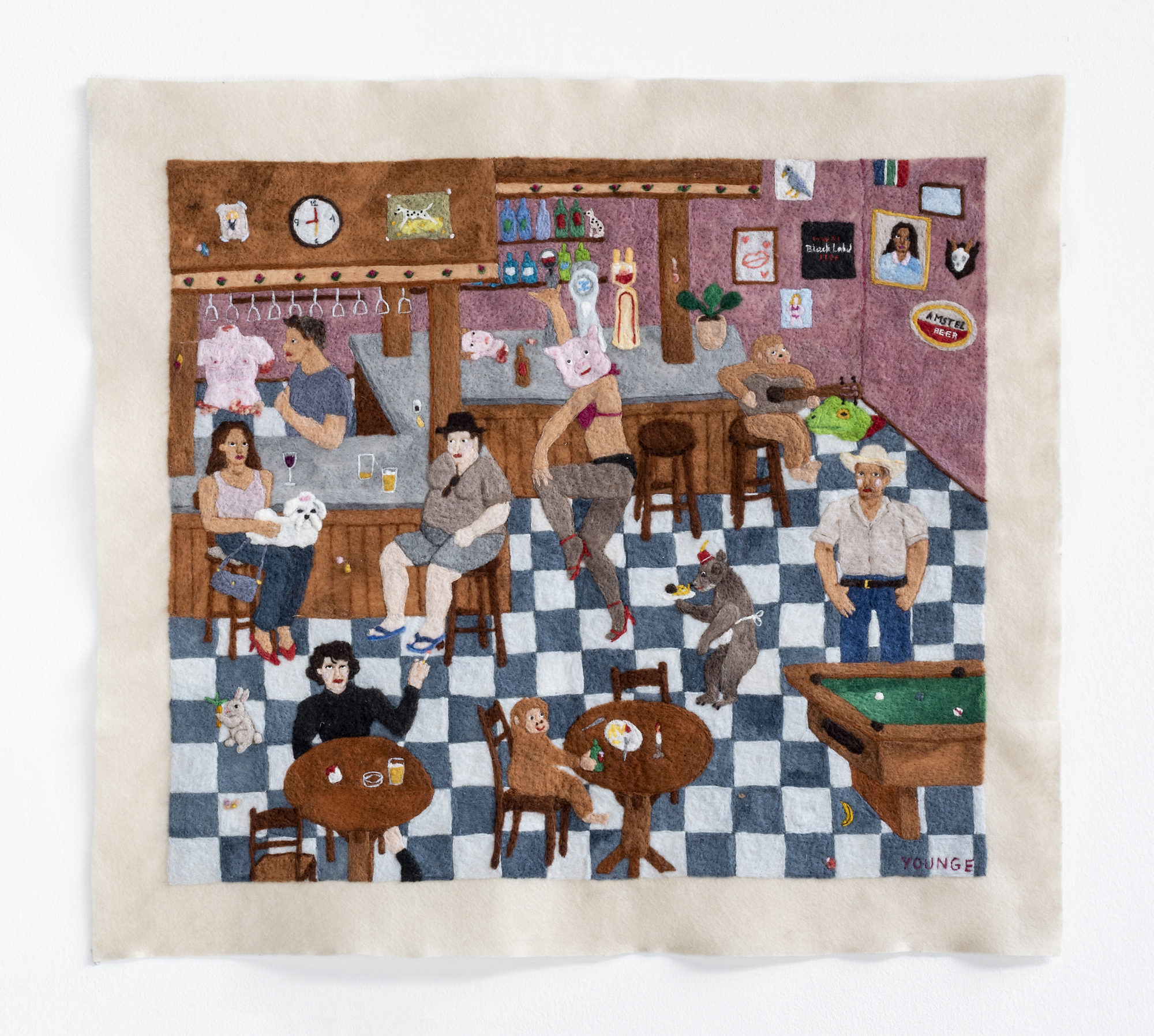
I know this man. He tried to break into my brother’s house (2019)
“Although sometimes the places I depict are more dreamlike and removed from reality, recently I’ve been interested in creating more mundane scenes, like a man on the toilet, or a family vacation up the West Coast,” Michaela says. “That’s why I love bars as the decor of my tapestries so much. It is a space that is simultaneously social and lonesome, you can be sharing the experience of a monkey playing acoustic guitar and have an entirely different night to the person sitting next to you.”
“In my reference folder right now,” she continues, “I have a series of photos of a woman from the 1950s showing off her house; the cover of Scope from January 1986; a McCall pattern to make a rabbit costume; a still life by 17th century painter Clara Peeters; pictures of 1960s modern apartment doll houses, pictures of the Westbury quilt and a folder labelled ‘horse racing’.”
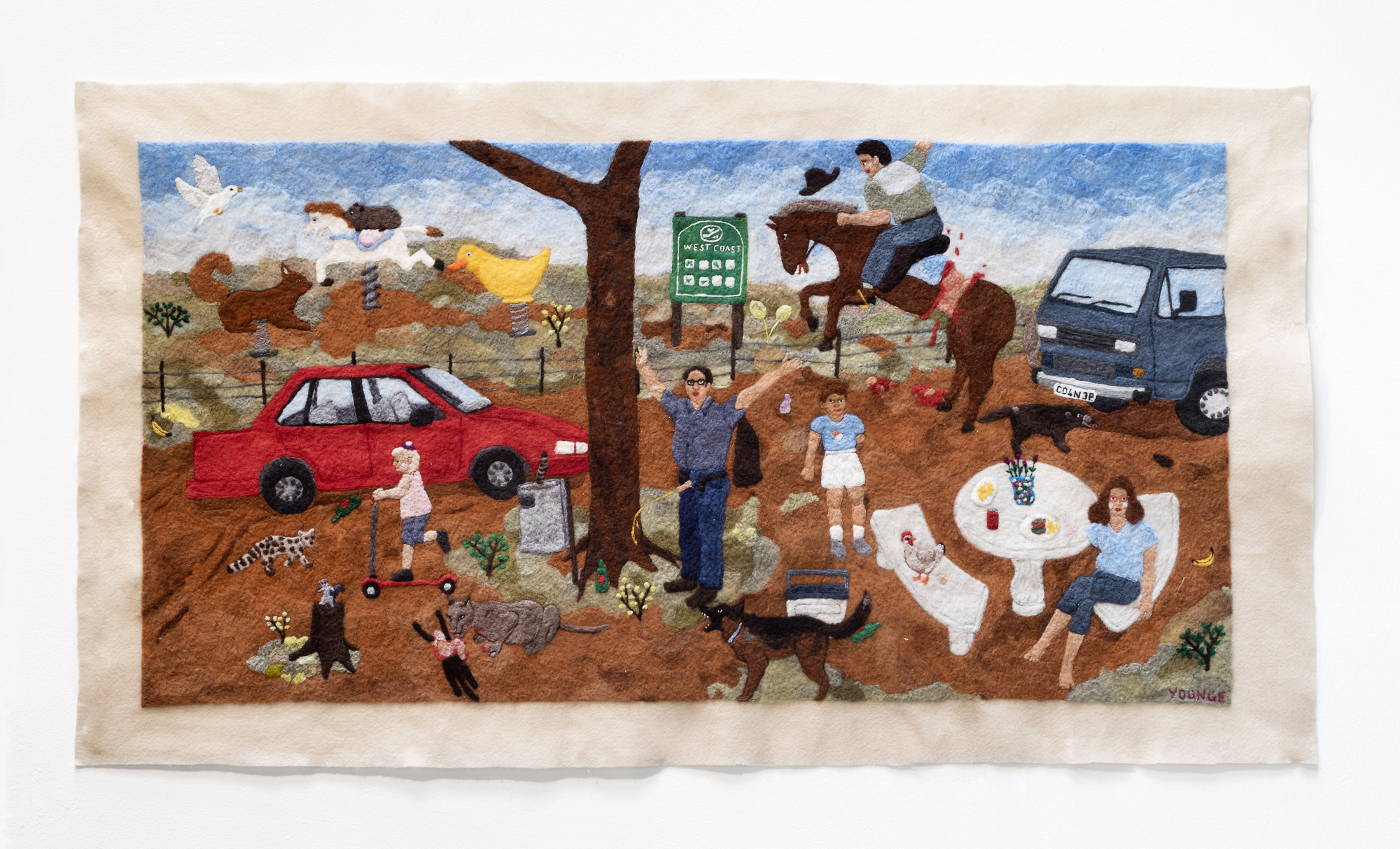
In the early evening, the Cape Vulture will make a stop to pick up the remains of a chicken mayo lunch (2019)
Michaela’s work was just on show at the Cape Town Art Fair, an event showcasing a diversity of contemporary artists hailing from South Africa and beyond. “In my personal experience, I think that the Cape Town art scene has become more globalised in the last decade with the influence of social media platforms and new galleries,” she says. “I remember there was a Johannesburg Biennale back in the late 90s, but that stopped, and then there didn’t seem to be anything like that for a while, but both the Cape Town and Johannesburg Art Fairs have definitely created a space for foreigners to see some artists’ work.”
“There is an aspect of the South African art world that remains small, and maybe difficult to ‘crack,’ so it would be wonderful to see space being created for more inclusivity,” she adds. “It would be great to see more collaborative spaces, which could be hired, or used so that artists could curate their own shows, whether that be performative or otherwise. Although there are definitely things that need to change, we’re blessed with amazingly creative artists.”
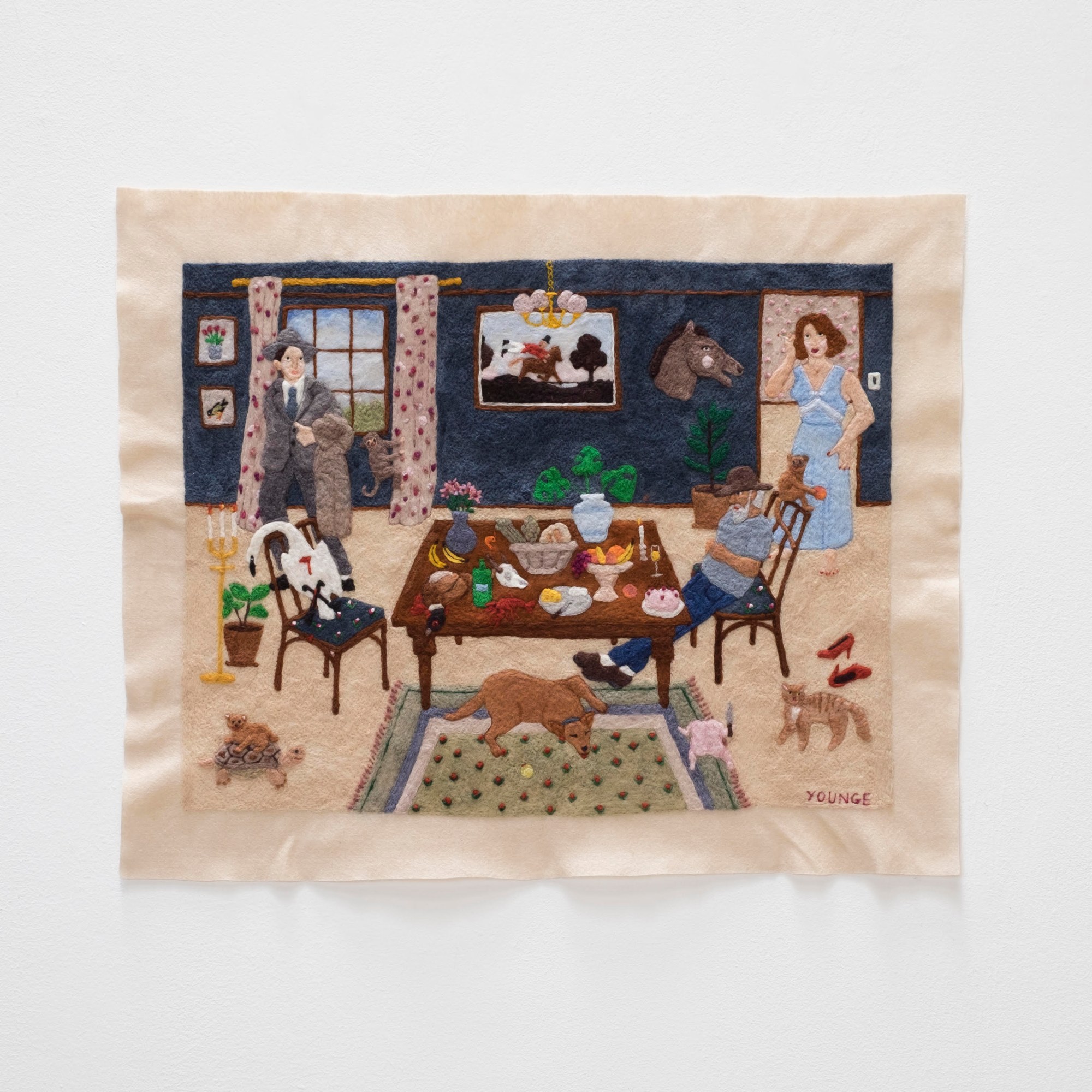
Credits
Photography Paris Brumner
